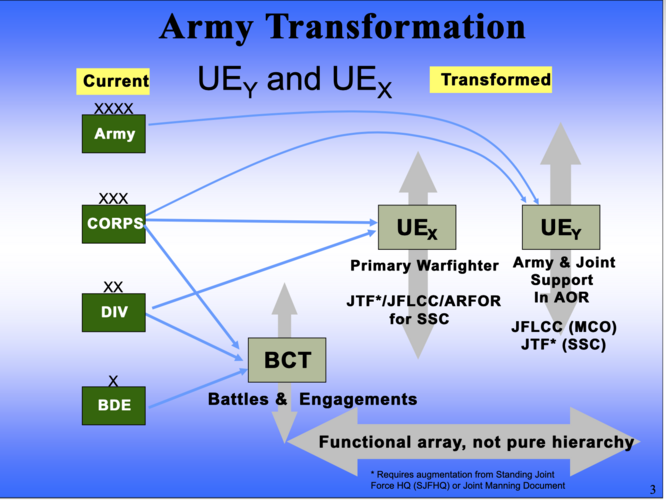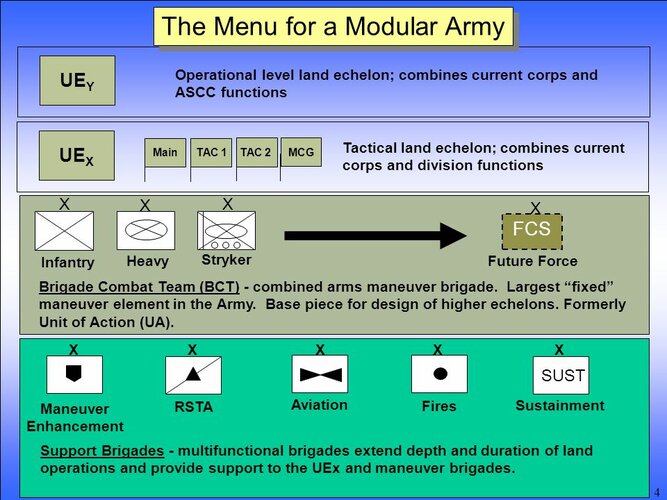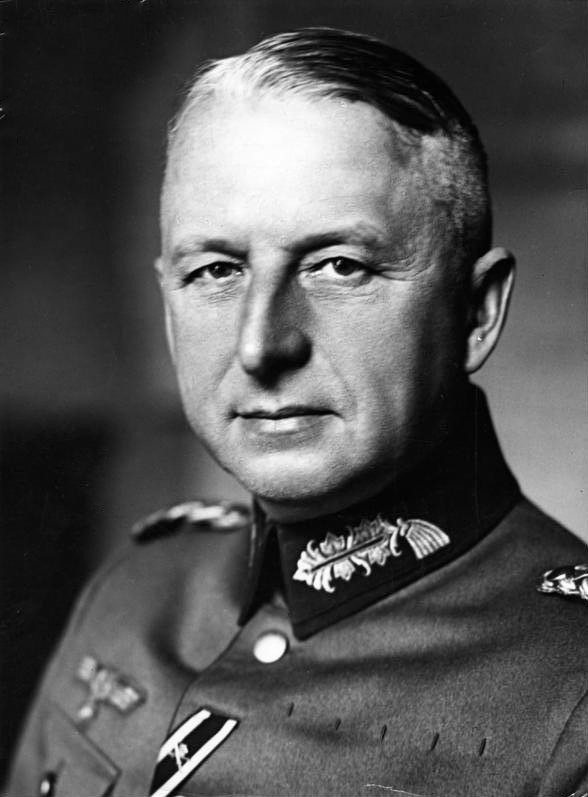- Joined
- 21 April 2009
- Messages
- 13,756
- Reaction score
- 7,697
http://www.army.mil/standto/archive_2015-04-09/?s_cid=standto
Download at the link;
Army Equipment Modernization Strategy
What is it?
The Army Equipment Modernization Strategy describes how the Army will modernize equipment to Win in a Complex World. The Army must be equipped to protect the homeland, foster security globally, project power and win. This strategy seeks to simplify systems, maximize reliability and reduce logistical demands and life cycle costs. The Army will invest in and deliver future-force capabilities to maintain overmatch against increasingly capable and determined adversaries. Vital modernization efforts will be balanced with end strength and readiness to mitigate mid-term risk.
What is the Army doing?
The Army Equipment Modernization Strategy nests with the Army Operating Concept to enable leaders to focus resources to maintain strategic and operational flexibility. Equipment modernization allows for an agile and more expeditionary Army to provide globally responsive and regionally engaged forces demonstrating unambiguous resolve. The objectives are to Enhance the Soldier for Broad Joint Mission Support, Enable Mission Command, and Remain Prepared for Joint Combined Arms Maneuver. To achieve these objectives, the Army must adapt current equipment and use commercially available technologies in the near-term (2016-2020) to meet current operational needs. The Army must evolve to increase the expeditionary capabilities of the force and address challenges to overmatch in the mid-term (2021-2029). Finally, the Army must innovate by investment in science and technology for affordable solutions, which provide asymmetrical advantages for the long-term (2030-2045). To mitigate risk in the uncertain fiscal environment, the Army will sustain Science and Technology investments, leverage current fleets, build new only by exception and delay the next generation of platforms until they are affordable.
Download at the link;
Army Equipment Modernization Strategy
What is it?
The Army Equipment Modernization Strategy describes how the Army will modernize equipment to Win in a Complex World. The Army must be equipped to protect the homeland, foster security globally, project power and win. This strategy seeks to simplify systems, maximize reliability and reduce logistical demands and life cycle costs. The Army will invest in and deliver future-force capabilities to maintain overmatch against increasingly capable and determined adversaries. Vital modernization efforts will be balanced with end strength and readiness to mitigate mid-term risk.
What is the Army doing?
The Army Equipment Modernization Strategy nests with the Army Operating Concept to enable leaders to focus resources to maintain strategic and operational flexibility. Equipment modernization allows for an agile and more expeditionary Army to provide globally responsive and regionally engaged forces demonstrating unambiguous resolve. The objectives are to Enhance the Soldier for Broad Joint Mission Support, Enable Mission Command, and Remain Prepared for Joint Combined Arms Maneuver. To achieve these objectives, the Army must adapt current equipment and use commercially available technologies in the near-term (2016-2020) to meet current operational needs. The Army must evolve to increase the expeditionary capabilities of the force and address challenges to overmatch in the mid-term (2021-2029). Finally, the Army must innovate by investment in science and technology for affordable solutions, which provide asymmetrical advantages for the long-term (2030-2045). To mitigate risk in the uncertain fiscal environment, the Army will sustain Science and Technology investments, leverage current fleets, build new only by exception and delay the next generation of platforms until they are affordable.


















